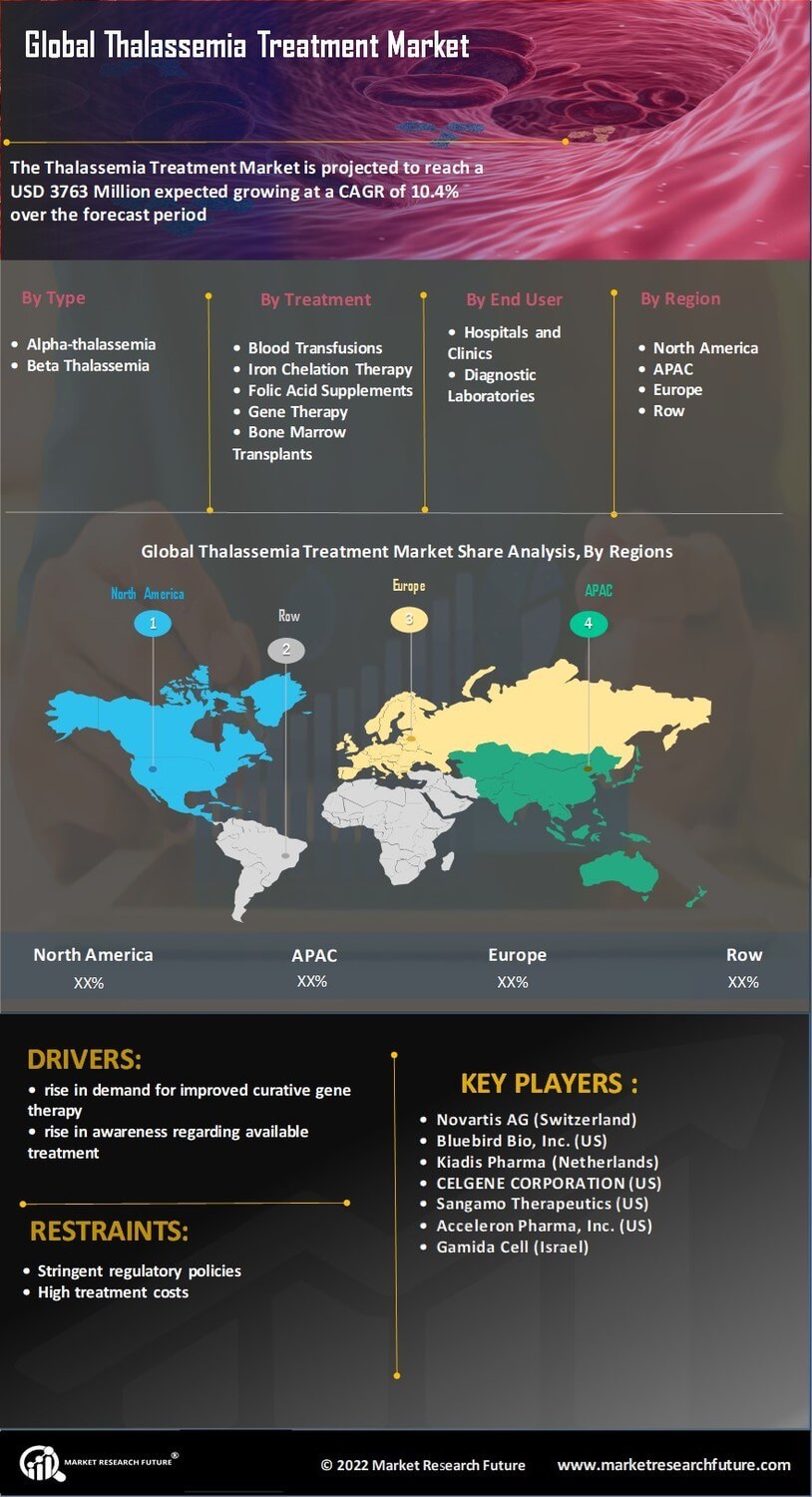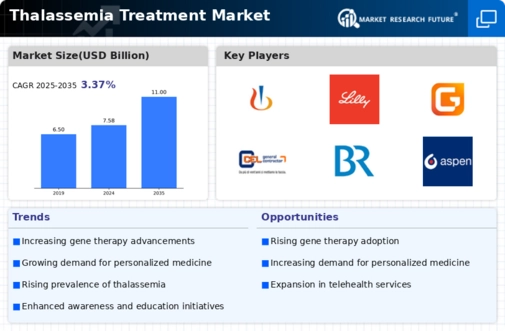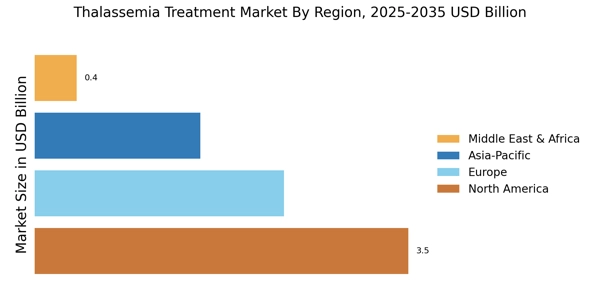Rising Prevalence of Thalassemia
The increasing prevalence of thalassemia is a primary driver for the Thalassemia Treatment Market. It is estimated that millions of individuals are affected by this genetic disorder worldwide, particularly in regions with high rates of consanguinity. The World Health Organization indicates that thalassemia is most common in Mediterranean countries, the Middle East, and parts of Asia. This rising incidence necessitates the development and availability of effective treatment options, thereby propelling the market forward. As awareness grows regarding the condition and its implications, more patients seek diagnosis and treatment, further stimulating demand within the Thalassemia Treatment Market. Consequently, healthcare providers are increasingly focusing on innovative therapies and management strategies to address this pressing health concern.
Government Initiatives and Support
Government initiatives and support play a crucial role in shaping the Thalassemia Treatment Market. Many countries have implemented national screening programs aimed at early detection and management of thalassemia. These initiatives often include funding for research and development of new therapies, as well as public health campaigns to raise awareness about the disorder. For instance, several governments have established registries to track thalassemia patients, which aids in understanding the disease's epidemiology and treatment needs. Such support not only enhances access to care but also encourages collaboration between public and private sectors, ultimately driving innovation and growth within the Thalassemia Treatment Market. As these initiatives expand, they are likely to lead to improved treatment accessibility and outcomes for affected individuals.
Increasing Awareness and Education
Increasing awareness and education regarding thalassemia are pivotal drivers for the Thalassemia Treatment Market. Educational campaigns aimed at healthcare professionals and the general public are essential for promoting early diagnosis and treatment. As awareness grows, more individuals are likely to seek genetic counseling and screening, leading to earlier interventions. This heightened awareness is also fostering a demand for comprehensive treatment options, including blood transfusions and iron chelation therapies. Furthermore, patient advocacy groups are actively working to educate communities about thalassemia, which may contribute to a more informed patient population. As a result, the Thalassemia Treatment Market is expected to experience growth as more patients are diagnosed and treated effectively.
Advancements in Treatment Modalities
Recent advancements in treatment modalities are significantly influencing the Thalassemia Treatment Market. Innovations such as gene therapy, which aims to correct the underlying genetic defects, have shown promising results in clinical trials. Additionally, the development of novel pharmacological agents, including those that enhance fetal hemoglobin production, is expanding the therapeutic landscape. According to recent data, the gene therapy market is projected to grow substantially, with estimates suggesting a compound annual growth rate of over 30% in the coming years. These advancements not only improve patient outcomes but also attract investment and research funding, thereby fostering growth in the Thalassemia Treatment Market. As new therapies emerge, they are likely to reshape treatment paradigms and enhance the quality of life for patients.
Technological Innovations in Healthcare
Technological innovations in healthcare are transforming the Thalassemia Treatment Market. The integration of advanced diagnostic tools, such as next-generation sequencing, allows for more accurate and timely identification of thalassemia. Additionally, telemedicine and digital health platforms are enhancing patient access to care, particularly in underserved regions. These technologies facilitate remote consultations and monitoring, which can improve treatment adherence and outcomes. The market for digital health solutions is projected to expand significantly, with estimates indicating a growth rate of over 20% annually. As these innovations continue to evolve, they are likely to enhance the overall management of thalassemia, thereby driving growth in the Thalassemia Treatment Market.


















Leave a Comment